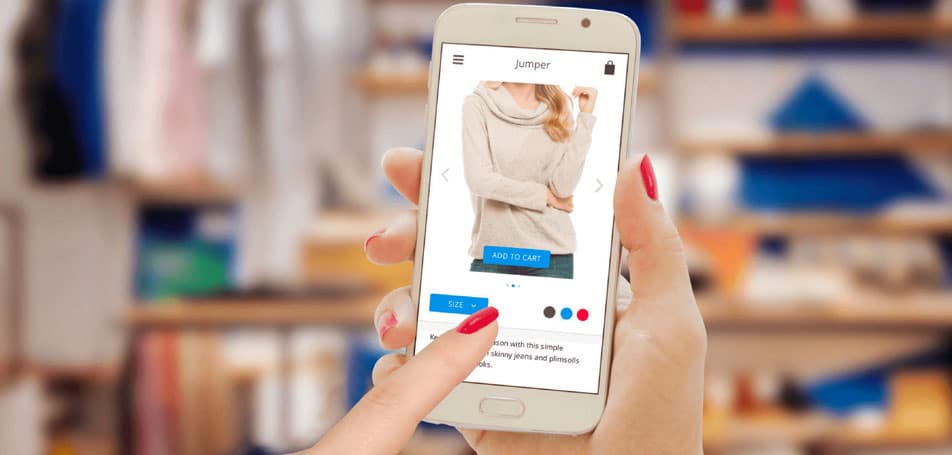
According to recent studies, researchers discovered that approximately 49% of global site traffic comes from mobile devices. Online shoppers all around the globe are beginning to grow more comfortable with the idea of purchasing items using their smartphones and tablets, but many eCommerce retailers still haven’t improved their mobile sites enough to cater to these new consumer buying habits. Despite the high percentage of mobile browsers who visit online stores, 86% of users abandon their carts before completing their purchase.
In order to stay relevant online and ensure that your store will continue earning success well into the new decade, prioritizing your mobile site is a must.
Benefits of Putting Mobile First
The most important reason to prioritize mobile in 2020 is simply that it’s inevitable that mobile commerce will take over traditional eCommerce in the coming years. Far more people are able to afford smartphones than laptops or desktop computers, and many countries around the globe are making efforts to improve public knowledge about accessing the internet. Creating a well-designed mobile-friendly site for a global audience can easily:
- Boost your SEO rankings. Ever since 2015, Google’s algorithm has been shifting to “mobile-first indexing,” which prioritizes mobile-friendly websites over traditional websites. It’s estimated that about 63% of users who visit eCommerce platforms do so by using their smartphone or tablet, so eCommerce merchants who still haven’t developed a responsive website or PWA could decrease their SEO rankings and miss out on thousands of potential customers.
- Create seamless shopping experiences. Thanks to the convenience of smartphones, even small business owners can create omnichannel shopping experiences for their customers with ease. Shoppers could purchase items directly from social media, download a shopping app from a specific retailer, or simply navigate to the mobile site.
- Provide several payment options. Security is one of the top concerns of mobile shoppers, and many are wary of inputting their credit card information into an unfamiliar website. Mobile-optimized sites can give shoppers peace of mind by letting them pay with whatever option works best for them, such as PayPal, ApplePay, or other mobile wallets.
- Improve communication. Mobile commerce allows businesses to communicate with customers in a variety of ways, including texting, push notifications, social media, and live chat. With other technologies, retailers can even connect offline and online experiences by sending customers location-specific information and deals.
- Give you a competitive edge. Have you ever tried to look up a website on your smartphone only for it to take several seconds to load? Have you ever left a web page after realizing that you have to scroll and zoom in simply to read the text on the site? These are still common issues for consumers, and providing them with a pleasant alternative to frustrating mobile experiences can help you gain conversions while helping you stand out amongst your competition.
Examples of Effective Strategies
If you’re still hesitant about taking on the challenge of mobile commerce, check out some of the most beneficial solutions retailers discovered when they took part in the Mobile Optimization Initiative:
- Simplify the Cart Page Header. Retailers did several experiments to reduce the number of icons, options, and other “clutter” within the shopping cart header. Simplifying the header and striking the right balance of usefulness and simplicity caused the average RPV (Revenue Per Visitor) to increase by over 6%.
- Collapse the Coupon and Promo Code Field. Allowing customers to collapse these fields reduces friction, increases RPV by over 8% on mobile devices, and still allows shoppers to use their coupons without difficulty.
- Auto Cart Update. This update automatically added items to the shopper’s cart as they browse in order to reduce the number of manual steps they need to complete. The reduction in friction led to improved shopping experiences for over 95% of site visitors, and RPV increased on both desktop and mobile devices.
Join the MOI to Learn More
To help retailers around the world gain a better understanding of mobile users and how to improve their own online stores, the Mobile Optimization Initiative was launched. Created by PayPal, HiConversion, ShipperHQ, and Magento, this initiative makes it simple for eCommerce merchants to run dozens of experiments to optimize their stores and compare their results with other retailers in real-time. If you want to increase your mobile conversions with a global community of other passionate eCommerce merchants, click here to join the MOI today!













